roots and stems
1/110
There's no tags or description
Looks like no tags are added yet.
Name | Mastery | Learn | Test | Matching | Spaced |
|---|
No study sessions yet.
111 Terms
a vascukar plant consist of
root systems (which are underground)
In roots systems , roots
anchor the plant and absrob water and minerals
zones of roots (bottom to top)
(bottom to top)
root cap
zone of cell division
zone of elongation
sone of maturation
root cap contains
two types of cells that are formed continously by the root apical meristem
Is there an equivalent structure to the root cap in stems?
No, stems do not have an equivalent structure to the root cap.
What forms the cells of the root cap?
The root apical meristem continuously forms the cells of the root cap.
What are the two types of cells found in the root cap?
Columella cells and root cap cells.
columella cell
nner cells that perceive
gravity (gravitrophism) and also respond to
pressure in the soil
root cap cells
outer and lateral layer;
protects the root apical meristem; lubricates
the root by producing mucigel
Mucigel
polysaccharide that lubricates to push its
way through the soil
zone of cell division derived from
rapid dividsion of the root apical meristem
What happens in the Zone of Cell Division?
Cells rapidly divide and newly formed cells increase in length, lengthening the root.
What do apical meristem daughter cells subdivide into?
They are subdivided into the three primary tissues. leaves, flowers, shoots
What is the main function of the Zone of Cell Division?
To produce new cells for root growth and development.
In the zone of elongation, cells
become
several times longer
than wide and increase slightly
in width
In the zone of maturation, elongated cells become
differentiated into specific cell types
what are the specific cell types
epidermal
root hair
parenchyma
endodermal
pericycle
xylem
phloem
In the Zone of Maturation, what do root surface cells become?
They become epidermal cells.
What structures are included among the epidermal cells in the Zone of Maturation?
Root hairs and nonhair cells.
eudicot roots have
xylem
monocot roots have
pith (ground tissue)
function of pith
support
and structure; stores sugars
in parenchyma cells.
What do root surface cells become in the zone of maturation?
They become epidermal cells, forming the outer layer of the root.
What are the two types of epidermal cells formed on the root surface?
Root hair cells and nonhair cells.
What is the function of root hair cells?
To absorb water and minerals from the soil and increase the root’s surface area.
What is the function of nonhair epidermal cells?
To protect the root and provide structure.
What do cortex cells become and what is their role?
: Parenchyma cells that store food (starch) and allow movement of water and minerals inward.
What do endodermal cells do?
They regulate the movement of water and minerals into the vascular tissue.
What do pericycle cells do?
They can divide and form lateral roots (side roots).
What are the vascular tissues that form in the zone of maturation?
Xylem and Phloem.
What is the function of xylem and phloem?
Xylem: Carries water and minerals upward.
Phloem: Carries sugars and nutrients throughout the plant.
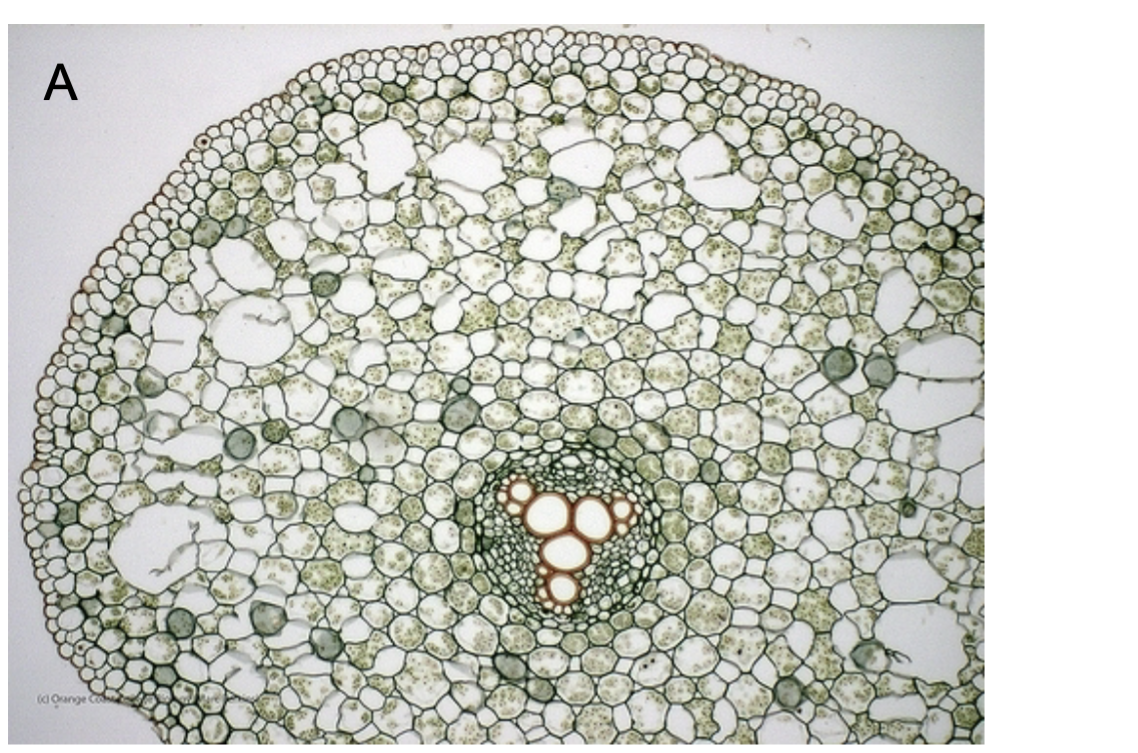
monocot or eudicot
eudicot
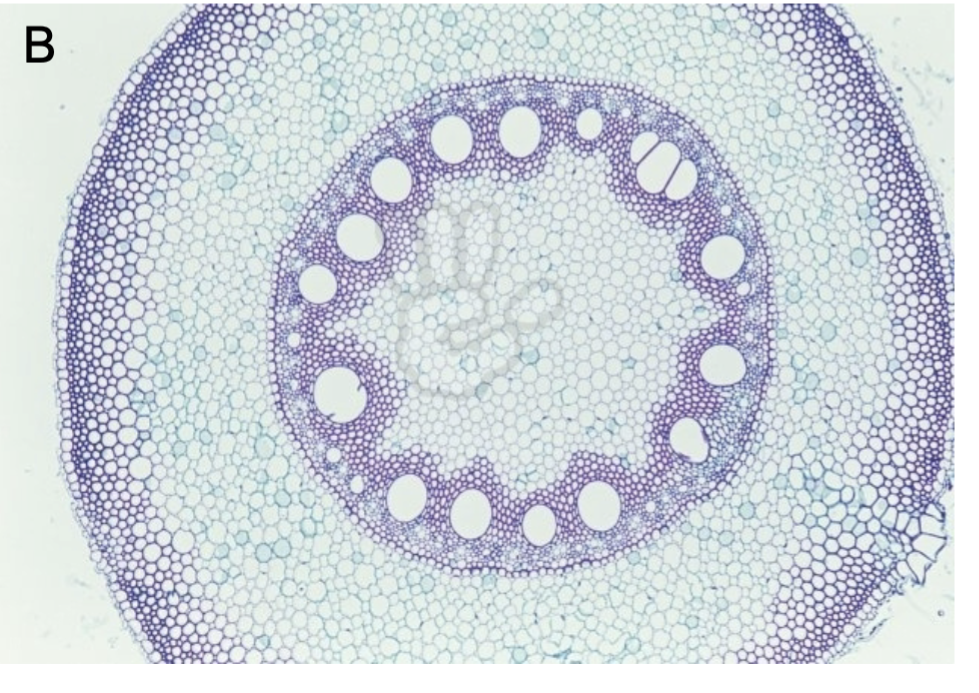
monocot or eudicot
monocot
secondary growth in roots
lateral meristems
In roots, what gives rise to lateral meristems and roots
pericycle
Secondary growth is the process in which
vascular cambium and cork cambium produce new tissues that make the plant thicker (increase in girth, not length).
Secondary xylem =
wood
Secondary phloem =
inner bark
Cork cambium
forms outer bark (mostly dead protective tissue)
casparian strip
contains a fatty, waterproof compound called suberin(cork) that
blocks the passage of water and minerals beteween endodermal cells
What is the Casparian strip made of?
A fatty, waterproof compound called suberin.
Where is the Casparian strip located?
In the walls of endodermal cells in plant roots.
What is the function of the Casparian strip?
To block the movement of water and minerals between endodermal cells, forcing them to pass through the cells instead.
Why is the Casparian strip important?
It ensures the plant can control which substances enter the xylem (the vascular tissue).
What happens because of the Casparian strip?
Water and minerals must pass through cell membranes (the symplastic pathway) rather than between cell walls (the apoplastic pathway).
What element is suberin primarily made of?
Carbon — making it hydrophobic (water-repelling).
The Casparian strip acts like
a filter or gatekeeper — it controls what and how much water and minerals enter the xylem.
two main types of roots
fibrous roots
taproot
fibrous root
many similarly sized roots
taproot
single large root with small branch roots
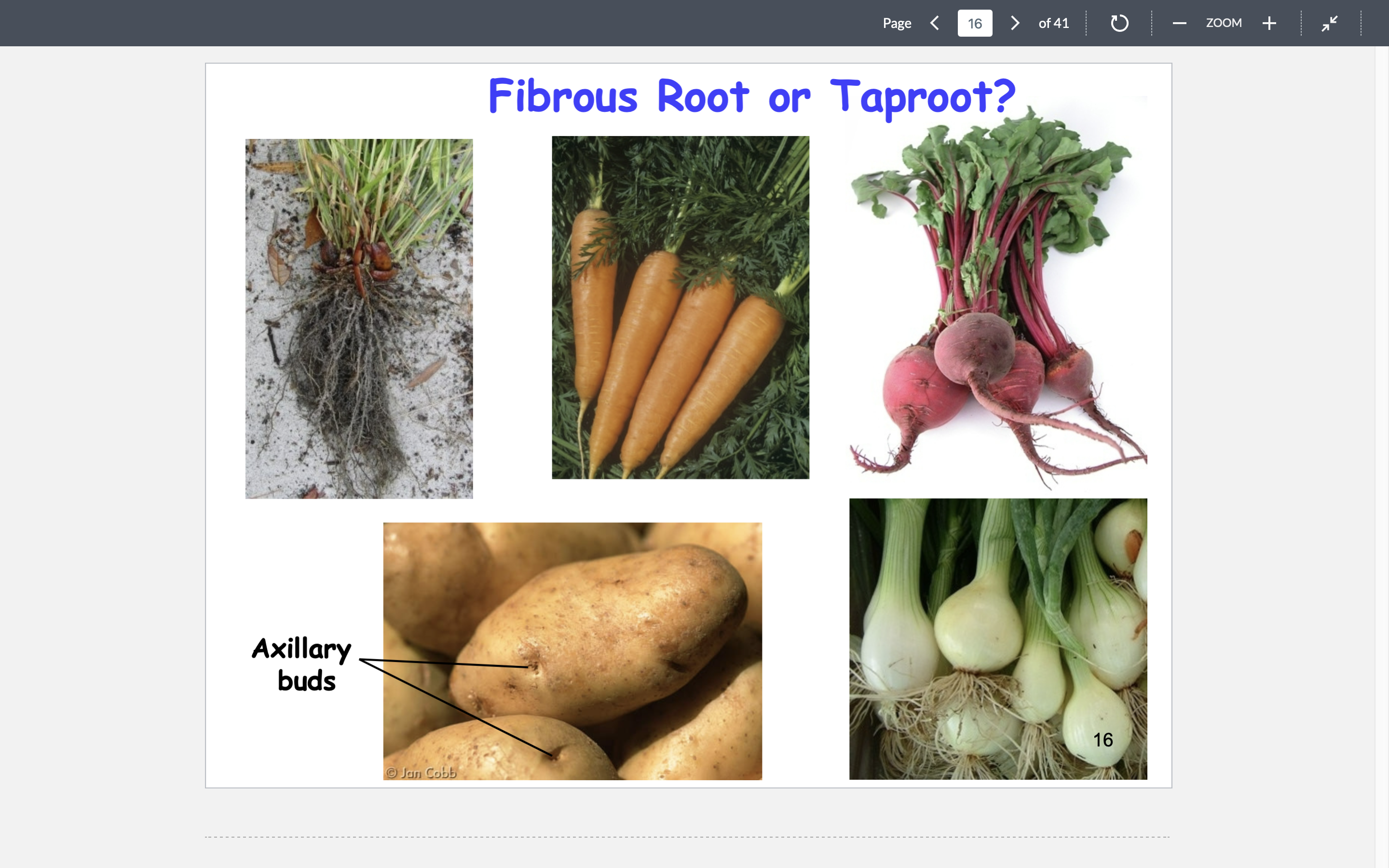
Fibrous root: grass
taproot: carrot, beet
modified stems(not roots): potato (tubur), onion(bulb)
holes on potatoes
axillary buds
prop roots
Keep the plant upright (corn)
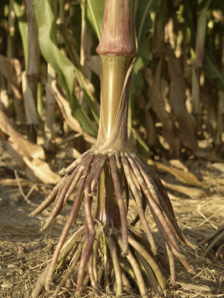
aerial roots
An anchor plant obtains water from the air (orchids)
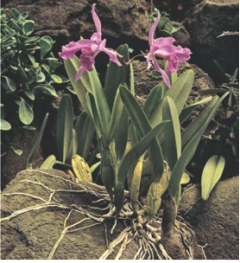
pneumatophores
used for plants growing in high salt muds of wet soil
facilitate oxygen uptake in O2-poor soil (mangrove tree)
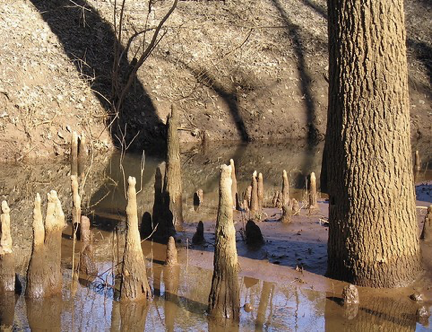
buttresses
help anchor large plants, provide stability
common in the tropics
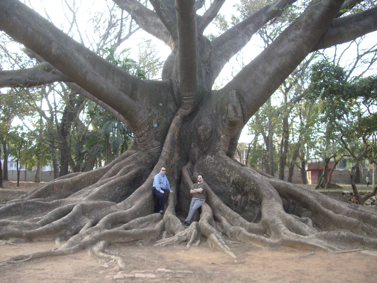
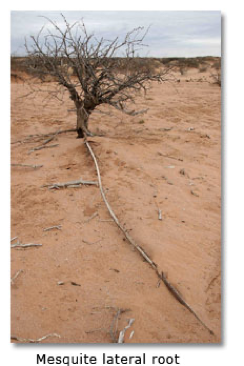
mesquite lateral root
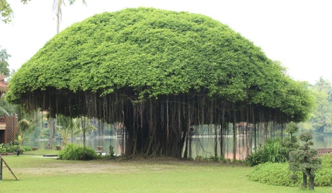
what kind of root
bayan tree (prop root)
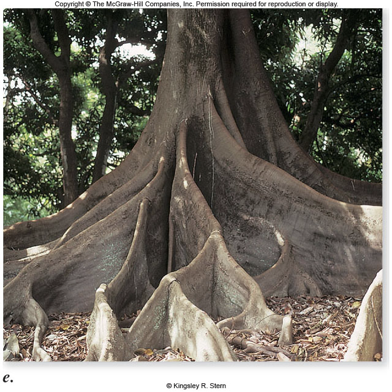
what kind of root
buttress root
water storage roots
store water
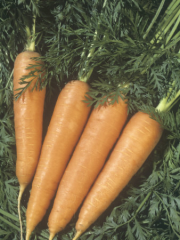
food storage roots
store carbohydrates
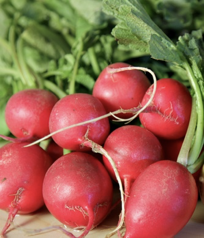
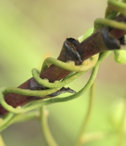
haustoria
penetrates host plant tissue (mistletoe)
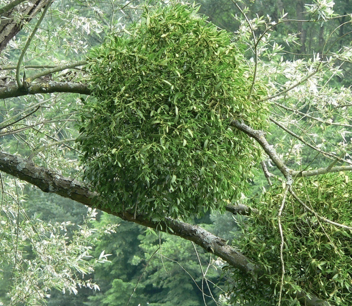

contractile roots (lily bulbs)
Pull the plant deeper into the soil
due to erosion
shoot system
supports stems, leaves, and flowers
aboveground
What does the shoot apical meristem (SAM) initiate?
: It initiates stem tissue.
What does the shoot apical meristem produce?
It produces primordia (early structures that will develop into new organs).
What do primordia develop into?
They develop into leaves, other shoots, and even flowers.
Where is the shoot apical meristem located?
At the tip of the shoot (the growing point of stems).
What is the main function of the shoot apical meristem?
To produce new cells for shoot growth and form new organs like leaves and flowers.
nodes
area where new leaf will grow
alternate node
1 leaf per node
opposite periwinkle node
2 leaves per node
whorled sweet woodruff node
3 leaves or more per node
bud scales
protect terminal buds
terminal bud
apical bud
makes the branch or twig longer
axillary bud
lateral bud
gives rise to branch
axil
angle between leaf petiole and stem
terminal bud scale scars
where bud scales were attached
bundle scar
where xylem and phloem enter the leaf
leaf scare
where leaf was attached
lenticels
gas exchanges in woody stems
A leaf consists of both a blade and a petiole.
true
If a leaf does not have a petiole, it has no axil.
false
The axil is the angle between the stem and the leaf (where axillary buds form).
Even if a leaf is sessile (no petiole), it still has an axil.
A branch with 5 nodes has how many internodes?
4 internodes
internodes:stem segments between two nodes.
herbaceous eudicot stems
stems that die back each year
in herbaceous eudicot stems, vascular bundles are
arranged in a circle in cross sections of the eudicot stem
in herbaceous eudicot stems,vascular cambium forms
between primary xylem and phloem
in monocot stems, vascular bundles are
scattered
monocot stems have no
vascular cambium (no secondary growth)
Ring barking or girdling
keeps the cambium from growing back
Girdling means
removing or destroying the cambium layer
Why Girdling kills a tree
Stops the downward transport of sugars
Roots fail → whole tree weakens:
Cambial regeneration is prevented
Stops downward transport of sugars: Phloem carries sugars made in the leaves down to roots. If phloem continuity is lost, roots starve.
Roots fail → whole tree weakens: Without sugars, roots can’t maintain themselves or absorb water well, which eventually causes the crown to decline.
Xylem is not immediately severed by superficial girdling, so water may still move for a time — this is why death can take months to years depending on the tree and extent of damage.
Cambial regeneration is prevented if the ring is continuous and complete; partial damage can sometimes be healed if cambium bridges form or callus tissue grows back.
ring barking/girdling is a common way
to kill invasive species
gives animals time to evolve
In woody eudicots, the cork cambium arises
in the outer
cortex
In woody eudicots, where does the cork cambium arise?
It arises in the outer cortex.
in woody eudicots, What does the cork cambium produce on the outside?
Cork cells.
in woody eudicots, What does the cork cambium produce on the inside?
Phelloderm cells (parenchyma-like cells).
in woody eudicots, What three layers make up the periderm (outer bark)?
Phelloderm, cork cambium, and cork cells.
What is another name for the periderm?
The outer bark.

Root or Stem? What type?
stem eudicot